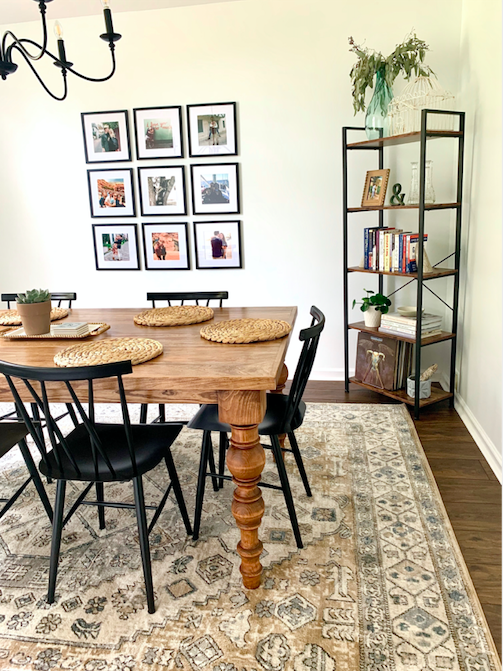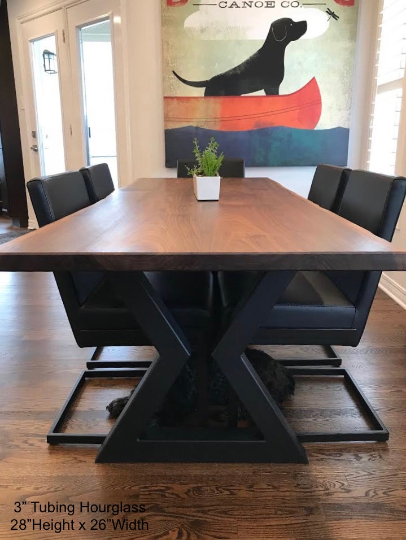How to Choose the Perfect Dining Room Table Legs for Your Home
How to Choose the Perfect Dining Room Table Legs for Your Home
Blog Article
From Conventional to Modern: Find the Ideal Dining Space Table Legs for Your Style
While traditional designs such as cabriole and turned legs evoke a feeling of timeless class, modern styles like barrette and geometric options provide a possibility for striking visual rate of interest. As you consider these aspects, the inquiry remains: how can you effortlessly integrate these diverse leg designs to develop an unified eating experience?
Comprehending Table Leg Styles
The range of dining-room table leg designs can significantly affect both the looks and performance of the area. Each leg design adds special aesthetic elements and useful features, catering to diverse design choices and use needs. Understanding these designs is crucial for picking the right table that lines up with your overall interior style vision.
As an example, conical legs provide a clean, timeless look that can enhance an area's style, while pedestal bases offer stability and optimize legroom, making them suitable for smaller spaces. Barrette legs, a hallmark of mid-century modern style, present an industrial panache, allowing for a ventilated, open feeling. Likewise, trestle legs stimulate rustic appeal, offering robust support and a sense of timelessness.
Wood legs can bring warmth and structure, whereas steel options commonly convey a streamlined, modern vibe. Inevitably, understanding table leg styles is necessary for creating a cohesive dining area that reflects personal style while making sure practicality and comfort.
Traditional Table Leg Options
When choosing dining-room table legs, traditional options usually embody ageless sophistication and workmanship. These layouts reflect an abundant heritage and a dedication to top quality, making them ideal for those who value traditional appearances.
Among one of the most iconic standard leg designs is the cabriole leg, identified by its graceful curved form. This design commonly includes attractive makings and is most frequently located in Queen Anne and Chippendale furnishings. Another popular option is the transformed leg, which flaunts a collection of smooth, rounded shapes that provide a classic appearance while keeping security.
Furthermore, the straight leg, while simple, offers a sturdy and basic structure that can blend perfectly with a selection of tabletop styles. For those attracted to ornate describing, claw-and-ball feet legs evoke a sense of grandeur and can act as a magnificent focal factor in any type of dining room.
Lastly, pedestal bases, although not purely legs, give an alternate conventional option that enables ample legroom and can be beautifully sculpted. Each of these conventional leg styles adds to the total atmosphere of a dining area, marrying function with visual charm.

Modern Table Leg Designs
Modern table leg layouts provide a varied variety of designs that emphasize cutting-edge materials and tidy lines. These designs usually prioritize capability while serving as striking centerpieces within an eating space. Minimal looks prevail, with legs crafted from products such as steel, glass, and engineered wood, which add to a contemporary and airy feeling.
One preferred layout is the barrette leg, characterized by its slender, tapered structure that provides stability without frustrating the table top (dining room table legs). This design is usually located in mid-century modern furniture and can effortlessly enhance numerous table shapes. Another pattern is the usage of geometric shapes, where legs may handle angular or asymmetrical forms, adding visual rate of interest and a touch of virtuosity

Mixing Designs for Unique Spaces
Usually, house owners look for to create special eating spaces that mirror their individual style by mixing different style aspects. This approach enables the unification of diverse visual appeals, resulting in a harmonious yet distinctive atmosphere. As an example, combining a rustic wooden table with smooth, contemporary metal legs can produce an appealing comparison that boosts the room's general charm.
Furthermore, integrating vintage table legs with modern table tops can evoke a feeling of history while preserving a modern-day sensibility. Such mixes not just display individual taste but also urge imagination, allowing homeowners to curate an area that really feels both personal and inviting.
Shade plays an essential function in this blending process; selecting table legs that enhance or comparison with the existing color pattern can enhance visual passion. For example, whitewashed legs can soften the boldness of a dark table surface, developing a balanced visual.
Tips for Selecting the Right Legs
Selecting read the article the right table legs is vital for achieving both functionality and aesthetic allure in your dining click here for info space. Begin by considering the general design of your area. Standard setups benefit from legs that feature complex carvings or transformed designs, while contemporary rooms might ask for streamlined, minimal styles.
Next, evaluate the elevation and stability of the legs. dining room table legs. Basic dining tables range in between 28 to 30 inches in height, so make sure the legs enhance this measurement for convenience. Furthermore, durable products, such as hardwood or metal, can enhance stability and durability
Examine the leg form as well-- choices consist of directly, tapered, or stand styles. Straight legs use a traditional appearance, while conical legs can add a touch of sophistication. Pedestal bases provide ample legroom and are perfect for smaller sized spaces.
Final Thought
In summary, selecting the ideal eating space table legs requires cautious factor to consider of both typical and contemporary styles. Traditional choices such as cabriole and turned legs supply classic style, while modern layouts like barrette and geometric forms look what i found offer a contemporary touch. By integrating leg design, elevation, and material with the overall décor, a cohesive and welcoming environment can be accomplished. Ultimately, the picked table legs must show the desired visual, improving the dining experience within the space.
The selection of dining space table leg styles can significantly affect both the visual appeals and functionality of the area. Eventually, recognizing table leg styles is crucial for producing a cohesive eating area that shows personal design while making certain functionality and comfort.One of the most iconic traditional leg styles is the cabriole leg, characterized by its graceful bent form. Straight legs supply a traditional look, while tapered legs can add a touch of sophistication.In summary, choosing the suitable dining space table legs calls for cautious factor to consider of both conventional and contemporary styles.
Report this page